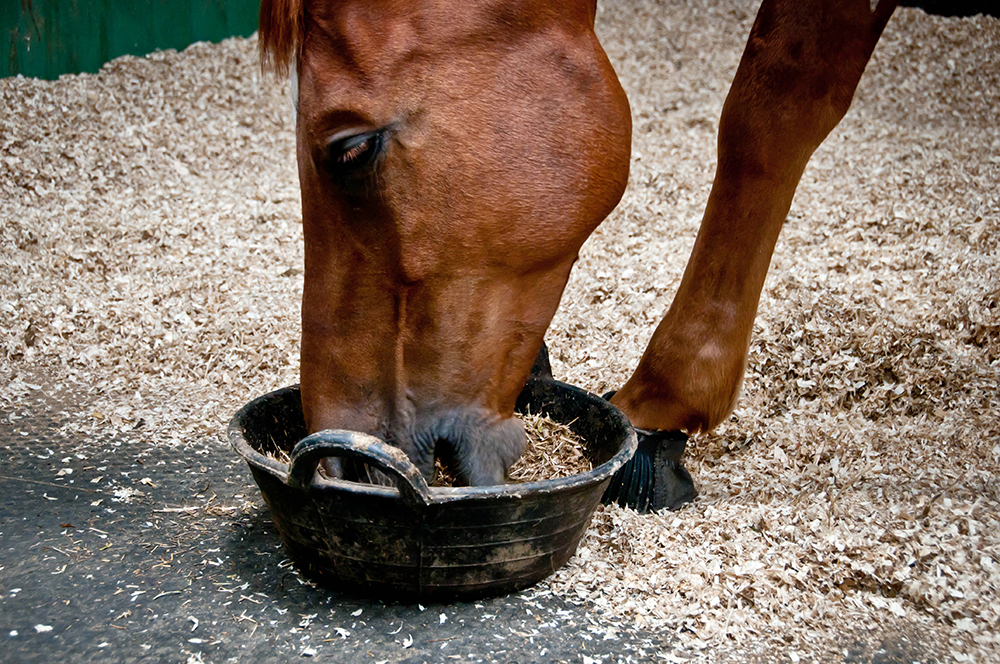Understanding the equine digestive system is fundamental for all equestrians and horse enthusiasts. This system is not only intricate but plays a vital role in maintaining a horse’s health and performance. With knowledge of how this system functions, horse owners can make informed decisions about feeding, digestion, and overall care.
Horses have evolved over millions of years, adapting their digestive systems to thrive on a diet primarily of fibrous plant material. This adaptation is crucial for their survival, and learning about their digestion can ensure they live healthy, fulfilled lives.

Introduction to the Horse’s Digestive Anatomy
The equine digestive system begins at the mouth and ends at the rectum. It comprises several key components, each playing a critical role in breaking down food and absorbing nutrients. At its most basic, the system includes the mouth, esophagus, stomach, small intestine, cecum, large intestine, and rectum.
The Mouth: The Start of Digestion
Digestion begins in the mouth, where horses use their lips and teeth to grasp and grind food. Saliva, produced during chewing, helps to moisten food, beginning the breakdown process. Proper dental care, including regular check-ups, ensures effective initial digestion.
How the Esophagus and Stomach Function
After food is swallowed, it travels down the esophagus into the stomach. In horses, the stomach is relatively small and can hold only about 2-4 gallons. Hence, horses are naturally designed to eat little and often. Within the stomach, hydrochloric acid and digestive enzymes continue breaking down food.
Due to the small size of the stomach, feeding horses twice daily is recommended. Learn more about optimal schedules at Feeding Horses Twice a Day.
The Importance of Small Intestine
The partially digested food, called chyme, moves from the stomach to the small intestine. This section is about 70 feet long and plays an essential role in the absorption of nutrients like proteins, simple carbohydrates, and fats. Enzymes from the pancreas and bile from the liver enter the small intestine, aiding digestion.
The Role of the Cecum and Large Intestine
After the small intestine, food enters the cecum, a fermentation vat that measures about four feet long. Here, microbial fermentation helps break down fibrous materials, an essential process for nutrient absorption.
The large intestine, consisting of the colon and rectum, is involved in water absorption and the formation of feces. Learn about nutrient absorption in greater detail at Equine Nutrient Absorption.
Feeding Practices for a Healthy Digestive System
Proper feeding practices are crucial for maintaining a healthy equine digestive system. An emphasis on high-fiber diets, including hay and fresh pasture, supports digestive health. Quality of hay can have significant impact, as detailed in Testing Hay Quality for Horses.
Common Digestive Issues in Horses
Colic, ulcers, and other digestive disturbances are common in horses. These issues often arise from improper feeding, stress, or abrupt changes in diet. Prevention and early detection can save lives. For more on preventing these issues, refer to OSU’s Guide on Dietary Deficiencies.
Conclusion: Ensuring Equine Digestive Health
By understanding the intricacies of the equine digestive system, horse owners can significantly influence their horses’ well-being. Proper feeding procedures and regular veterinary check-ups are vital steps in maintaining digestive health. With informed care, horses can lead longer, healthier lives.

Frequently Asked Questions
What is the most crucial part of the equine digestive system?
Every part has its importance, but the small intestine is crucial for nutrient absorption, making it extremely vital.
How can I improve my horse’s digestive health?
Regular dental care, appropriate feeding schedules, and quality hay are key elements. Also, consider consulting resources like Horse Feeding Schedule for optimization strategies.
Why do horses need a high-fiber diet?
Horses need a high-fiber diet as they are natural grazers. Fiber supports good gut motility and microbial health in the cecum.
This article contains affiliate links. We may earn a commission at no extra cost to you.
